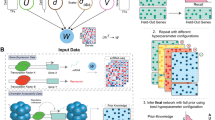Abstract.
Differential display is used worldwide as a method to identify changes in gene expression and to discover novel genes that are involved in important biological pathways. The principle of differential display is the systematic amplification of the 3′ termini of messenger RNAs by using anchored oligo-dT primers in combination with upstream arbitrary primers. The separation of the polymerase chain reaction products by gel electrophoresis and their direct comparison allows the identification of differentially regulated genes. Recently, fluorescent differential display was established as the first nonradioactive differential display system with equivalent sensitivity to originally 33P isotopic labeling method. Because of its simplicity, sensitivity, reproducibility and automation, which increase the throughput and accuracy, differential display has become one of the most widely used gene-screening methods in biomedical research involving mammals. This chapter provides a glimpse of the application of differential display in search of target genes of the p53 tumor suppressor gene.
Similar content being viewed by others
Author information
Authors and Affiliations
Additional information
Rights and permissions
About this article
Cite this article
Stein, S., Liang, P. Differential display analysis of gene expression in mammals: a p53 story. CMLS, Cell. Mol. Life Sci. 59, 1274–1279 (2002). https://doi.org/10.1007/s00018-002-8506-7
Issue Date:
DOI: https://doi.org/10.1007/s00018-002-8506-7




